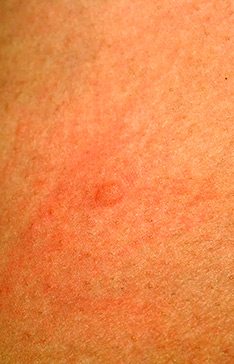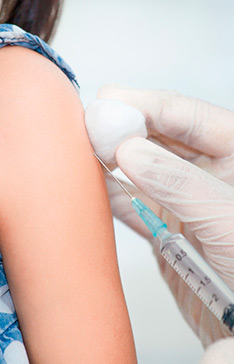Experts note that in recent years in Russia, reduced the incidence of tuberculosis. In 2017, it was about 48 cases per 100,000, and in 2014, about 59 cases. Time to identify cases of tuberculosis helps Mantoux test, which many call the vaccination and refuse to do it. So what is the test and why it should be done?

Who is Mantu?

Mantoux test got its name after the French physician Charles Mantoux, who devoted himself to the study of tuberculosis. In particular, it is suggested to do subcutaneous injection of tuberculin for diagnostic purposes. Ironically Mantoux test was described by another scientist named Felix Mendel, but in the name of the test, his name is not affected.
What is a Mantoux?
Mantoux is not a vaccine, as many believe. It’s a test or a test that indicates whether the body is active TB infection. During the execution of the Mantoux test, the doctor inserts under the skin to tuberculin – an extract of Mycobacterium tuberculosis. It turns out that the “button” that children are strictly forbidden to wet. The injection site directed lymphocytes, but only those who have already had contact with the causative agent of tuberculosis (if the child performed all the required vaccinations, the causative agent of tuberculosis in the body was). Size skin seal after three days, doctors judge the presence or absence of tuberculosis.
So why not test soak?
Many parents wonder whether the injection site is not wet? And what happens if it still happens?
Actually nothing bad will. If the site of injection after a Mantoux test not comb, do not RUB and do not put a band-aid, the water will not give any distortion of the results. It is considered that the recommendation to “not wet test” is given just in case, as well as the old memory. To the Mantoux test the doctors did test Pirke. The tuberculin was applied to the surface of the hands, and then it was done special notches. If water gets into these open wounds, the results of the test and the truth distorted.
The types of reaction following Mantoux test
After the injection of tuberculin reaction may be different: someone does not stay on the tracks and someone remains red spot. The reaction is the following:
- the seal size 0-1 mm – backlash
- the size of 2-4 mm is doubtful reaction
- the seal size 5 mm and more positive reaction
- the seal size 17 mm (in children) or 21 mm (adults) – hyperergic reaction, which tells about the real threat to the health
What does the size of the seal after the test?
If you want to determine for themselves what is said of the size of the “buttons” after the Mantoux test, do not forget to consider a number of factors:
- the age of the child
- how much time has passed since the last vaccination against tuberculosis
- what are the results of a previous Mantoux test
For example, in the age years, when children are still pronounced the effect of vaccinations in the hospital, normal is the seal size from 5 to 10 mm. But at the age of 6-7 years, the response will be either negative or doubtful. It is therefore important to do a Mantoux test each year and to entrust the interpretation of the results to the doctor.

What is the Mantoux test should cause alarm
In some cases, after checking the results of the Mantoux test, the doctor may refer the child for a consultation with a tuberculosis specialist. For example, if for the first time checks were obtained positive reaction (not associated with re-vaccination) if the sensitivity to tuberculin increased compared to the previous test, if the sensitivity is very high. However, you should not immediately sound the alarm: changing your reactions to tuberculin may be due to various diseases transferred, so far as was properly done test and even with the conditions of storage of tuberculin.
What do the TB specialist for consultation on the results of the Mantoux test?
In case of deviations of the results of the Mantoux test from the norm the child will go for a consultation with a tuberculosis specialist. This does not mean that he was ill with tuberculosis. It only means that it is necessary to conduct additional tests.
In reception to the TB doctor, you must bring the vaccination data, the results of the previous test samples and, if available, results of chest x-ray and blood and urine tests. The TB doctor will decide on the direction for further examination. As a rule, Diaskintest.
What is Diaskintest and how it differs from the Mantoux test?

Diaskintest is a test that allows to detect the presence in the body of the causative agents of tuberculosis. Its fundamental difference from the Mantoux test is that the test does not give the reactions associated with BCG vaccine. Therefore, false positive results when conducting virtually absent.
If Diaskintest is positive, the patient is sent for further examination. Almost one hundred percent probability he or tuberculosis, or the disease occurs in a latent form and can go into active. In this case it is better as soon as possible to begin treatment.
